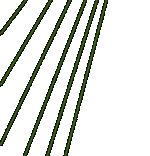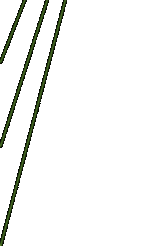Holographic
interferometry
Something from the history
The first holographic
interferograms have appeared because of mistake or casual circumstances. Moreover, it has
not attracted attention. Not all experimenters for the first years of holography clearly
understood its theoretical bases. The first steps and all efforts were directed on making
exactly the holograms. It's known, certainly, from interferometry, that the shift of beams
during an exposure already on half of wave length makes impossible to record
microinterference pattern, which represents the hologram. Therefore, possible measures to
maintain mechanical stability of the optical scheme were accepted. Massive granite and
marble plates were used, also massive holders of optical elements. But the first lasers
had very low power, and photoplates - similar sensitivity. Thus, it was very difficult to
achieve stability of half of wave length during the process of hologram recording. As
result, the restored image sometimes covered with strips, which distorted a general
picture. Those holograms were rejected as defective, and the experimenters with new
efforts fought with vibrations.
For sure, such
situation could not proceed any longer. Critical mass enlarged. Someone should reflect.
And such person was found. And he was not the lonely genius, but some independent groups
of the experimenters. It is interesting, that the first message (1965) concerned
holographic interferometry with time averaging. The methods of two exposures and real time
are younger than the first message approximately on two-three months. So, in the middle of
60's holographic interferometry has appeared and begun to develop.
Methods of holographic
interferometry
It is possible to write
down several wave fronts on the same plate and obtain several holograms. If these waves
are coherent (and often it happens), they interfere at joint restoration, and there will
be only differences between these waves on resulting interferogram.
This method holographic
interferometry has received the name a method of two exposures.
It is possible to use
another method. Hologram of the object, after processing, is established with high
accuracy on a former place - often plate is processed directly on a place of shooting. At
the subsequent hologram exposure in the scheme, that's used at its recording, the object
wave restored from the hologram by a reference beam, will interfere with a new wave going
from object. As result, it is possible in a real time to trace changes of processes
occurring in object of research.
Such method holographic
interferometry is called a method of real time.
For more complete
clearness it is possible to underline, that:
In classical interferometry
waves interfere, which
at one moment of time had passed different trajectories.
In holographic interferometry
waves interfere, which
at the different moments of time had passed identical trajectories.
Partially, this fact
allows to use in experiments optical elements of usual quality without worsening of an
interferometric pattern — all of heterogeneity of an optical path, that is constant
in both exposures, will be compensated.
The unique feature
holographic interferometry allows to study processes occurring inside optically nonuniform
media and with diffusely reflecting objects. Such was absolutely impossible in
classical interferometry!
Classical
interferometry dealt only with processes and objects varied in a real time. In holographic
interferometry the real-time information can be recorded and compared with information of
other moments of time. Thus, one more factor - time has appeared. The examples are
researches of vibrating objects.-->
|





